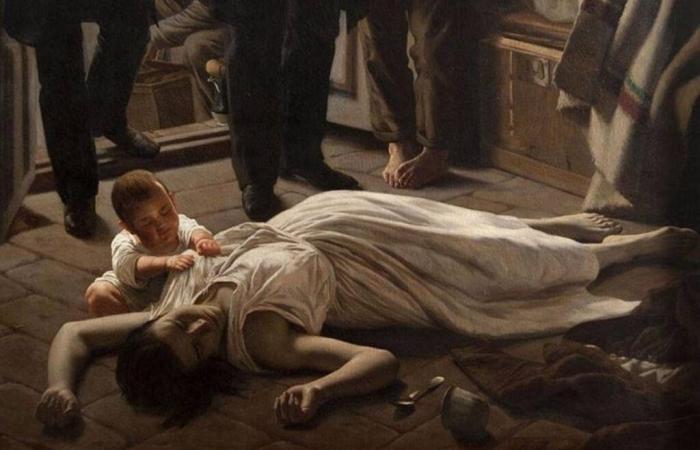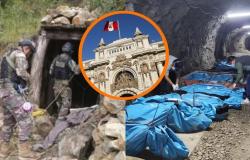“An episode of yellow fever in Buenos Aires” is a work that condenses tragedy, helplessness and solidarity in a single image. Painted by Uruguayan Juan Manuel Blanes in 1871, the painting portrays a moving fact that occurred during the yellow fever epidemic that ravaged Buenos Aires, based on a real story.
The morning of March 17, 1871, the serene Manuel Domínguez traveled the streets of the Buenos Aires neighborhood of San Telmo when he noticed that the door of the house located in Balcarce 384 was open. Upon entering, he discovered a terrible scene: a woman lay dead on the ground, while her baby, desperate, tried to breastfeed without understanding that her mother was no longer alive. As stated in the police party written by Commissioner Lisandro Suárez, cited by Leandro Ruiz Moreno in his work “The historical plague” and reproduced in the magazine ‘Everything is history’ by Miguel Ángel Scenna, the woman was identified as Ana Brisitiani, an Italian immigrant whose husband, seriously ill, was in another place, possibly in the neighborhood of La Boca.
Inspired by this dramatic event, the painter Juan Manuel Blanes decided to capture the tragedy with heartbreaking realism. On the canvas of 2.30 by 1.80 meters, two men are observed contemplating with deep sadness the lifeless body of Ana and his son clinging to the body. These two men, although they were not present at the real scene, were fundamental figures during the epidemic: José Roque Pérez and Manuel Gregorio Argerich.
Roque Pérez, born in Córdoba in 1815, was a lawyer specialized in criminal law and president of the Popular Public Health Commission, formed to face the health crisis. Manuel Gregorio Argerich, a young 35 -year -old doctor, had served in several Argentine civil wars and also faced cholera in 1867. Both bravely toured the city providing assistance to the patients until they fatally contracted the disease. Roque Pérez died on March 26, 1871 and Argerich two months later, on May 25.
The yellow fever epidemic was devastating: only in the city of Buenos Aires, the disease left a shocking balance of more than 13,600 deaths. According to Ruiz Moreno, the epidemic reached its most dramatic peak on April 13 of that year, the day 501 people died. Fatal victims throughout the country were even greater, reaching approximately 14,000 people, a figure that represented around 8 % of the Buenos Aires population, mostly humble inhabitants in popular areas, which lacked drinking water and sewage services.
Blanes exhibited this work on December 8, 1871 at the Foyer of the former Colón Theater in Buenos Aires, causing a deep impression among those who visited the exhibition, since practically all Buenos Aires families had suffered losses for this tragedy. The work was finally acquired by the Government of Uruguay, the artist’s home country, where he is today in the National Museum of Visual Arts in Montevideo.
Juan Manuel Blanes, known as “The painter of the homeland” in Uruguay, was born in Montevideo on June 8, 1830 and died in Pisa, Italy, a day like today of 1901.
In Córdoba, a Villa Páez street tributes the painter, as well as Roque Pérez and Manuel Argerich. <
By Marcos Calligaris






